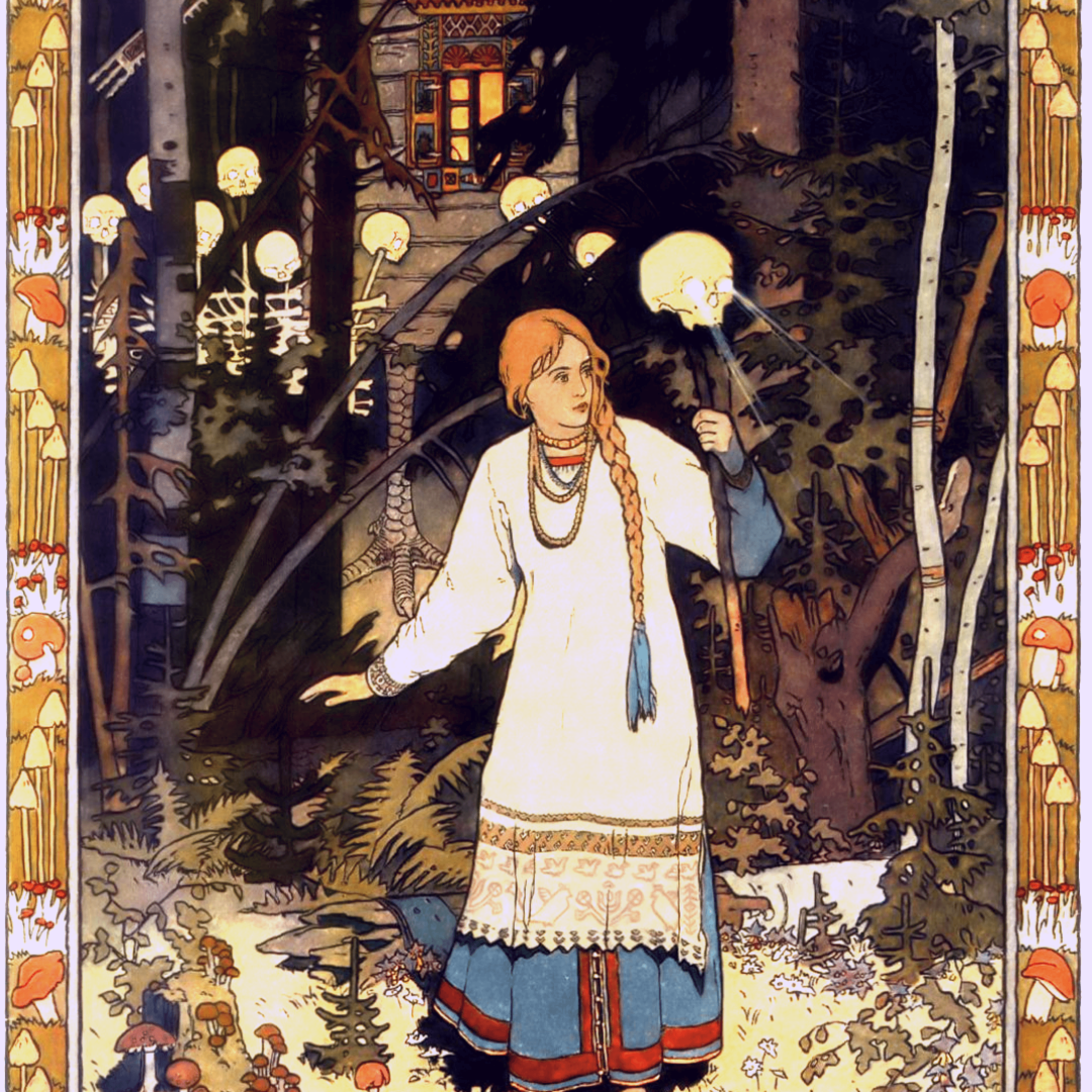
The Baba Yaga is a classic figure in Slavic, Czech, and Russian folklore. You might not have heard of her, however, especially if you were brought up in a Western culture. But you’ve probably come across her in Western fairytales such as Hänsel and Gretel
, Rapunzel
, Snow White
, or Fraue Trude
, where she is also known as the Wild Hag, Old Witch, Fairy Godmother, Crone, or Evil Queen. This makes the Baba Yaga one representation of an archetype that’s buried deep in our collective subconscious, a story that we have all heard growing up, in one way or another.
Even within Slavic folklore, she plays many different roles, ranging from evil monster who eats little children to supportive benefactor who helps a protagonist find his missing bride.
But through all of these stories, her appearance is quite consistent:
she flies around in a cauldron, using a broomstick like an oar to get through the air,
she lives in a forest hut that stands on chicken legs and is surrounded by a fence made of human skulls,
she is generally described as a terribly ferocious-looking old witch.

In one particularly popular story published in the timeless masterpiece collection of intercultural myths and fairytales, Women Who Run With the Wolves by Clarissa Pinkola Estés, the Baba Yaga appears in the story Vasalisa the Wise
. The bones of this story can also be found in Cindarella
or Aschenbrödel
.
A young girl, Vasalisa, loses her mother to sickness, leaving her alone with her father. He remarries and Vasalisa suddenly not only has a new step-mother, but also two mean step-sisters. She is not treated with love in this new family and is made responsible for the most disgusting or annoying chores around the house. One particularly dark and cold day, she gets sent out into the dark forest to collect fire wood. She is scared but goes out. As is usual in such stories, she gets lost in the woods and after a long and cold journey through the dark forest, ends up at a weird-looking hut on chicken legs that is surrounded by skulls that make up a fence. She meets the Baba Yaga who takes her in and treats her rather indifferently. At least Vasalisa has warm shelter and because she’s so grateful for this, she tries to fulfil the weird tasks that the Baba Yaga makes her complete. The tasks include repetitive chores and some seemingly pointless things, such as sorting this from that. This process teaches Vasalisa to be curious and ask the really tough questions of life. The entire encounter with the Baba Yaga culminates in Vasalisa receiving her power: a lantern made out of a human skull, shining with bright fire. As she makes her way back home through the dark forest, she is no longer afraid or cold or alone. She has realized that her true power comes from within. (There is a twist at the very end, but we won’t spoil this here - go read this incredible retelling of the story in Women Who Run With the Wolves by Clarissa Pinkola Estés).
In short, Vasalisa loses her mother, meets her new stepmother, is sent out into the dark woods, meets a creepy old witch, and finds her confidence and power.
Vasalisa’s empowerment lies in the acceptance of her cyclical nature and the cyclical nature of all beings and things. She practices patience and ritual in mundane, every-day tasks. She recognizes both her light and her dark depths, and cherishes them equally. This theme follows the classic Heroine’s journey - the feminine counterpart to the well-known Hero’s journey. It represents the second half to making us whole. It teaches us the importance of not only going up and out to Spirit (the masculine way), but also of going down deep into the soul (the feminine way).
Our menstrual cycle is a constant cycle of life, death, and rebirth.
Does your culture still place a stigma on your period and your menstrual cycle?
Have you always tried to fit your life into a linear mold, just to get your career moving?
has the media been conditioning you about what your body, your cycle, and your whole being should look like?
The Baba Yaga is here to act as your empowerment and support system during your lifelong menstrual journey:
She teaches you to listen to your body’s health signals.
She helps you recognize your unique cycle patterns.
She empowers you with the power of self knowledge.
Does this coming-of-age and inner-awakening story resonate with you? Do you feel called to the underlying idea of empowerment through facing the shadow aspects of yourself (those parts we don’t generally like or that aren’t light & fluffy - kinda like our periods have been dubbed)?
Support us and our mission:
and
Unterstütze Baba YagaSources & Credits
Illustrations by Ivan Bilibin from Narodnyye russkiye skazki (“Russian Popular Fairy Tales”)